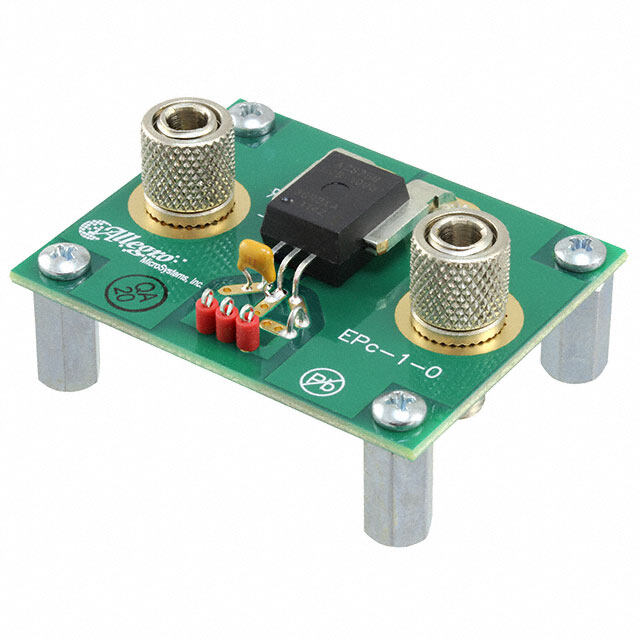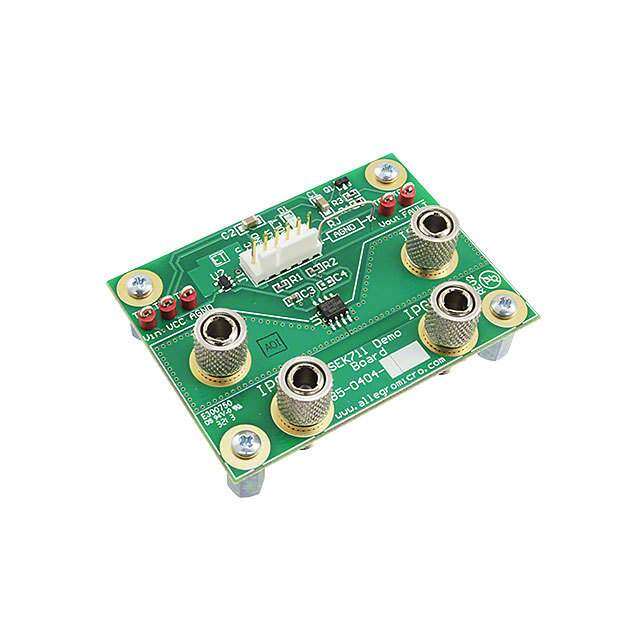ICGOO在线商城 > 开发板,套件,编程器 > 评估板 - 传感器 > Si7005USB-DONGLE
- 型号: Si7005USB-DONGLE
- 制造商: Silicon Laboratories
- 库位|库存: xxxx|xxxx
- 要求:
| 数量阶梯 | 香港交货 | 国内含税 |
| +xxxx | $xxxx | ¥xxxx |
查看当月历史价格
查看今年历史价格
Si7005USB-DONGLE产品简介:
ICGOO电子元器件商城为您提供Si7005USB-DONGLE由Silicon Laboratories设计生产,在icgoo商城现货销售,并且可以通过原厂、代理商等渠道进行代购。 Si7005USB-DONGLE价格参考。Silicon LaboratoriesSi7005USB-DONGLE封装/规格:评估板 - 传感器, Si7005 - Humidity, Temperature Sensor Evaluation Board。您可以下载Si7005USB-DONGLE参考资料、Datasheet数据手册功能说明书,资料中有Si7005USB-DONGLE 详细功能的应用电路图电压和使用方法及教程。
| 参数 | 数值 |
| 产品目录 | 编程器,开发系统嵌入式解决方案 |
| 描述 | TOOLSTICK FOR SI7005插座和适配器 Si7005 Toolstick |
| 产品分类 | |
| 品牌 | Silicon Laboratories IncSilicon Labs |
| 产品手册 | |
| 产品图片 |
|
| rohs | 符合RoHS无铅 / 符合限制有害物质指令(RoHS)规范要求 |
| 产品系列 | 嵌入式开发工具,嵌入式工具与配件,插座和适配器,Silicon Labs Si7005USB-DONGLE- |
| 数据手册 | |
| 产品型号 | Si7005USB-DONGLESI7005USB-DONGLE |
| 产品 | USB Adapters |
| 产品培训模块 | http://www.digikey.cn/PTM/IndividualPTM.page?site=cn&lang=zhs&ptm=26200 |
| 产品种类 | 插座和适配器 |
| 传感器类型 | 湿度和温度 |
| 使用的IC/零件 | Si7005 |
| 其它名称 | 336-2329 |
| 商标 | Silicon Labs |
| 嵌入式 | 是,MCU,8 位 |
| 工具用于评估 | Si7005 |
| 应用说明 | |
| 感应范围 | - |
| 所含物品 | 板 |
| 接口 | I²C, USB |
| 接口类型 | I2C |
| 标准包装 | 1 |
| 灵敏度 | - |
| 用于 | Si7005 |
| 电压-电源 | 5V,USB |
| 系列 | Si7005 |

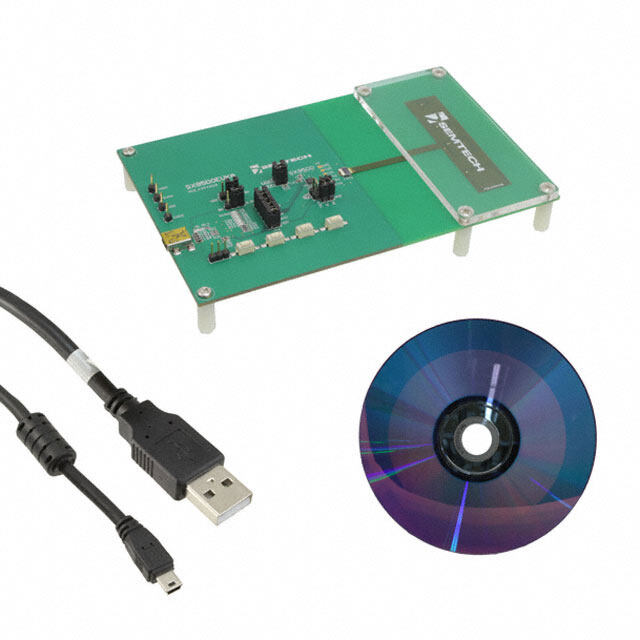

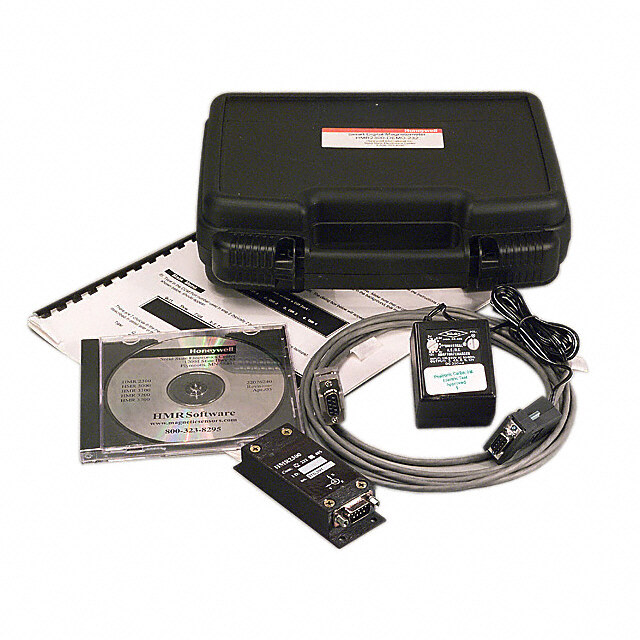
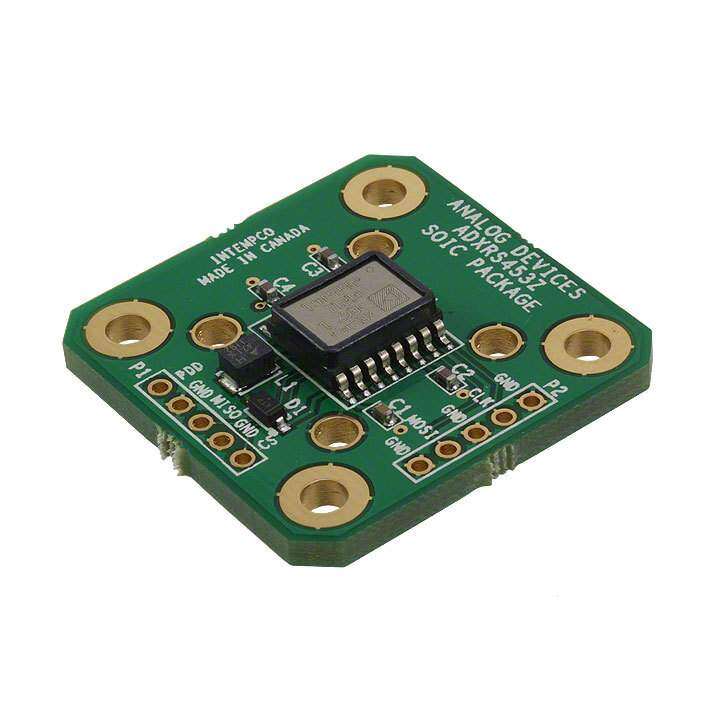
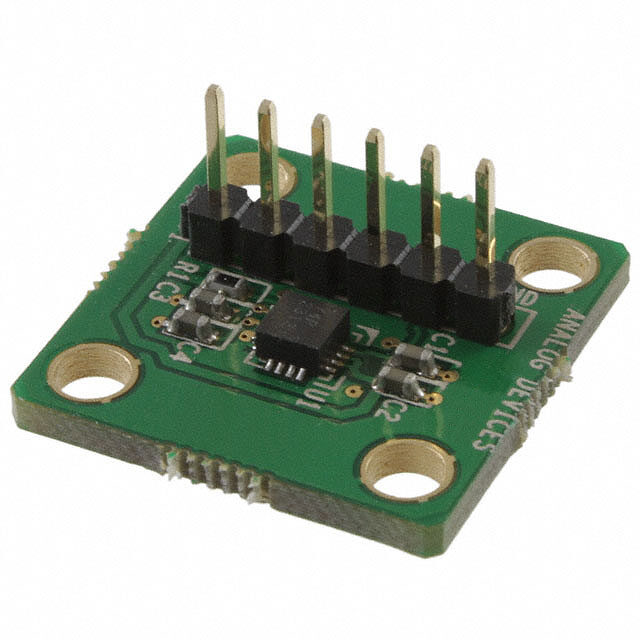
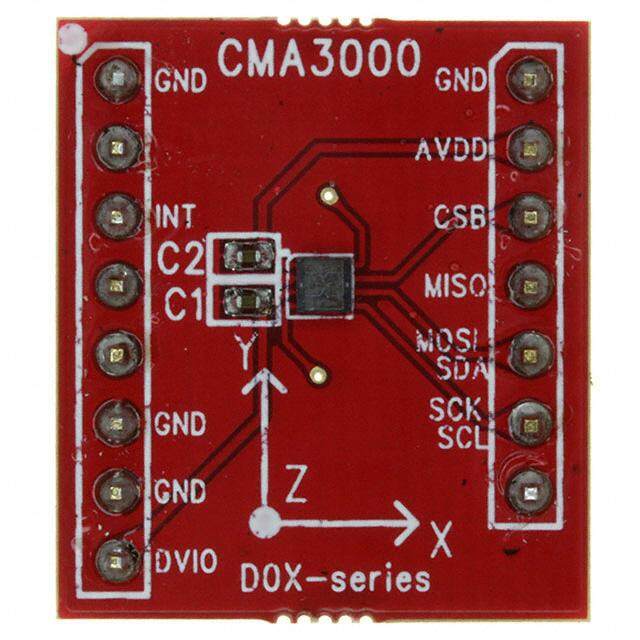
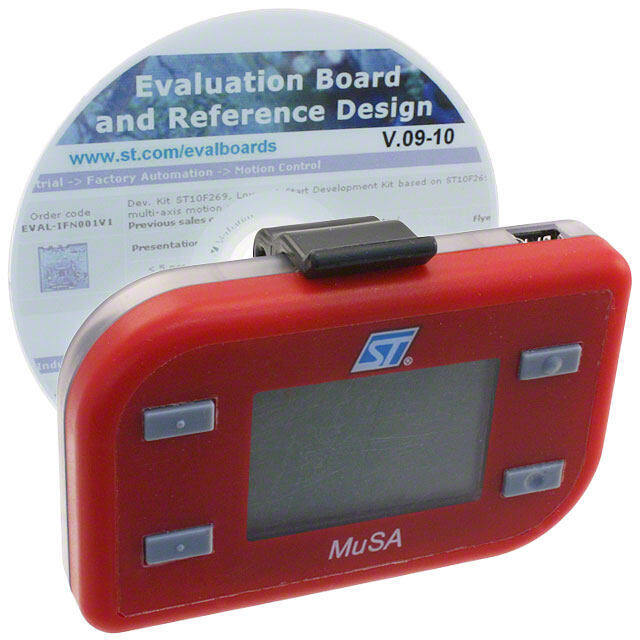
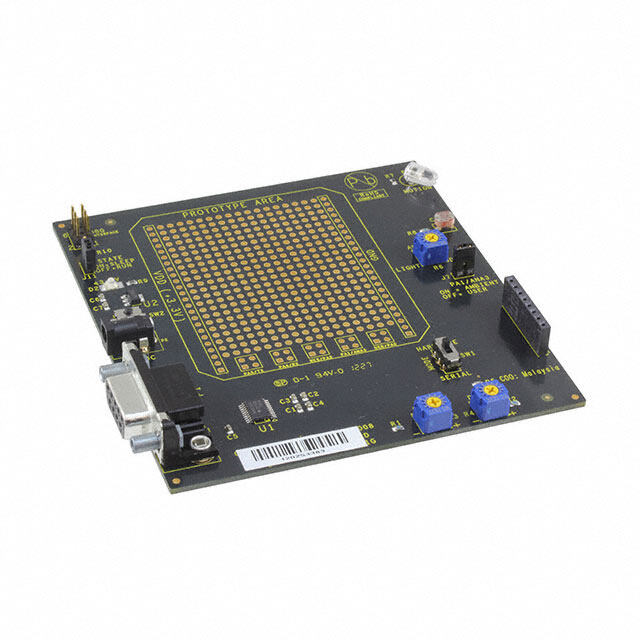

- 商务部:美国ITC正式对集成电路等产品启动337调查
- 曝三星4nm工艺存在良率问题 高通将骁龙8 Gen1或转产台积电
- 太阳诱电将投资9.5亿元在常州建新厂生产MLCC 预计2023年完工
- 英特尔发布欧洲新工厂建设计划 深化IDM 2.0 战略
- 台积电先进制程称霸业界 有大客户加持明年业绩稳了
- 达到5530亿美元!SIA预计今年全球半导体销售额将创下新高
- 英特尔拟将自动驾驶子公司Mobileye上市 估值或超500亿美元
- 三星加码芯片和SET,合并消费电子和移动部门,撤换高东真等 CEO
- 三星电子宣布重大人事变动 还合并消费电子和移动部门
- 海关总署:前11个月进口集成电路产品价值2.52万亿元 增长14.8%


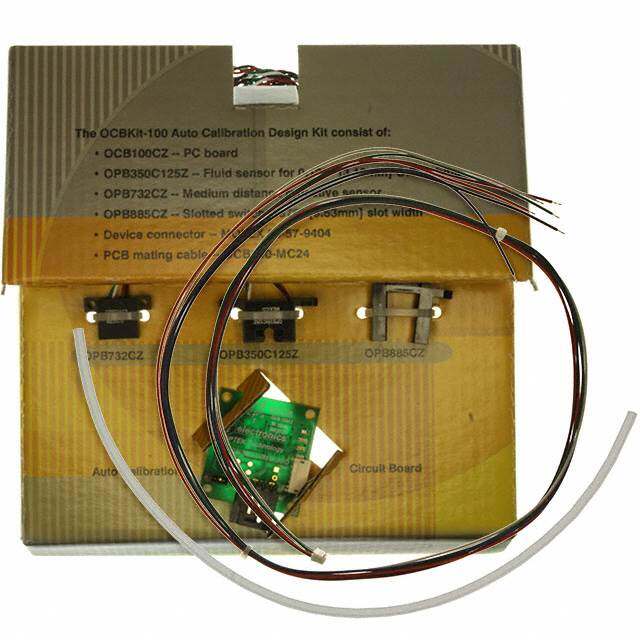
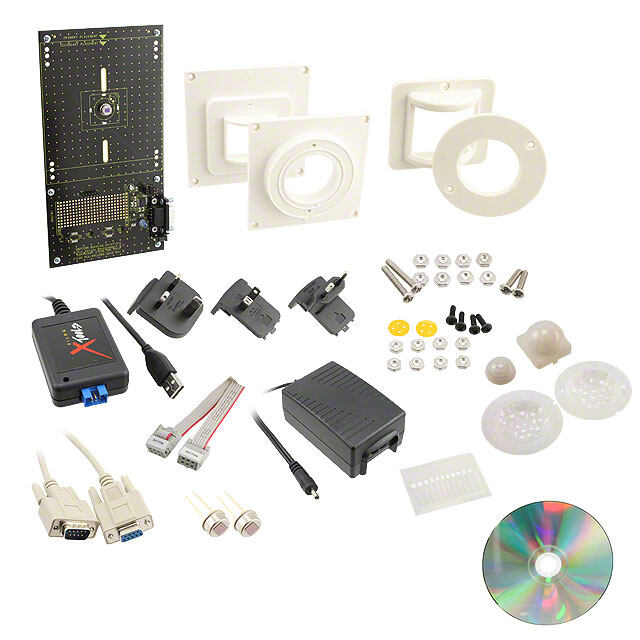
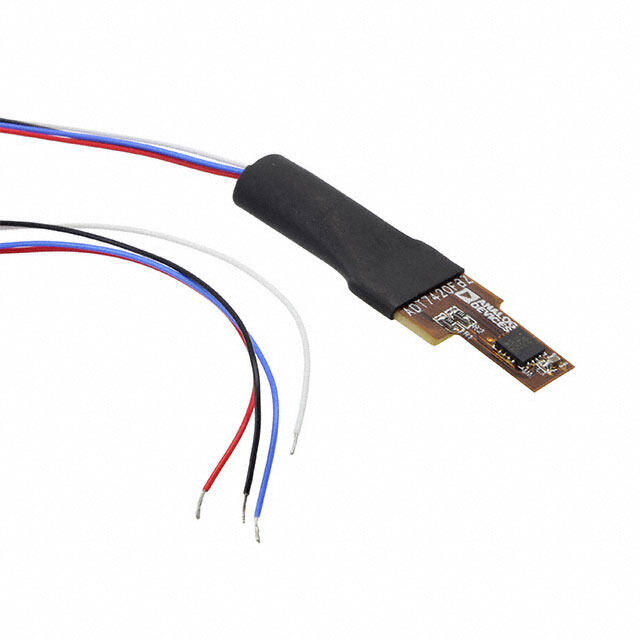
PDF Datasheet 数据手册内容提取
Si7005USB-DONGLE EVALUATION DONGLE KIT FOR THE Si7005 TEMPERATURE AND HUMIDITY SENSOR 1. Introduction The Si7005 is a relative humidity and temperature environmental sensor in a 4mm x 4mm QFN package. Access to the sensor output is via a standard I2C digital interface. The Si7005 is a highly-integrated device incorporating a humidity sensor, temperature sensor, signal conditioning, an analog-to-digital converter, control logic, and an I2C interface. 2. Evaluation Kit Description This document describes the operation of the Silicon Laboratories Si7005USB-DONGLE Rev 1.0 evaluation kit. The Si7005 evaluation kit and accompanying graphical user interface software allow the user quick and easy access to the features and functions of the Si7005 sensor as well as enabling the evaluation of the sensor’s performance. The evaluation kit includes the following: Si7005USB-DONGLE evaluation board consisting of one Si7005 sensor Windows graphical user interface software for complete control of the Si7005 sensor (Windows XP, VISTA, or 7 required) Si7005 C8051F381 Figure 1. Si7005USB-DONGLE Figure 2. Si7005-EVB (Ordered Separately) Rev. 0.2 10/12 Copyright © 2012 by Silicon Laboratories Si7005USB-DONGLE
Si7005USB-DONGLE 3. Software Setup It is important that the software be installed before connecting the USB dongle to the PC; this ensures that the software drivers are correctly installed. To set up the software, run the file, setup.exe, from the supplied software installation disk. The Si7005 demo platform was developed based on National Instruments LabView™ platform. To install it, you must accept the National Instruments end-user license agreement shown in Figure3. Figure 3. National Instruments Software License Agreement Continue through the following screens, which track the Graphical User Interface installation. 2 Rev. 0.2
Si7005USB-DONGLE Figure 4. Start Installation Screen Rev. 0.2 3
Si7005USB-DONGLE Figure 5. Installer Update Screen After this screen, you will see the installer for the Si7005 device drivers. 4 Rev. 0.2
Si7005USB-DONGLE Figure 6. Device Drivers Installer Screen Rev. 0.2 5
Si7005USB-DONGLE 4. Hardware Setup and Software Operation Once the GUI installation is complete, connect the Si7005 USB dongle to your PC. Your PC should automatically recognize the USB dongle and use the newly-installed driver. Next, find the icon for the Si7005 GUI, which should be easily found under recently-installed programs from the start menu, under ProgramsSilicon LaboratoriesSi700x Evaluation Software or at C:\program files\Silicon Laboratories\Si700x\. With all the hardware plugged in and once your PC identifies the USB dongle, launch the GUI. The GUI itself is simple to use. Figure7 shows a screen shot of the GUI. Figure 7. GUI Screen 6 Rev. 0.2
Si7005USB-DONGLE The USB dongle contains one Si7005 relative humidity and temperature sensor and can also support one additional Si7005 sensor at connector J2 by connecting a Si7005-EVB (ordered separately). To start the evaluation, click the “INIT” button, the GUI will recognize how many sensors are connected. Select temperature units by clicking on the “Select Temperature Units” button, the button label will toggle between “Deg C” and “Deg F” indicating the selection of either degrees Celsius or degrees Fahrenheit. In the “Enter Sample Interval (seconds)” number box, the time interval between samples can be entered, a value between 1 and 65535 seconds can be entered. The Si7005 on-chip heater can be enabled/disabled using the “On-chip Heater” toggle button. The heaters of all the connected sensors are controlled simultaneously. The upper chart by default displays temperature; this can be changed to dew point by clicking on the selection box located directly under the Silicon Labs logo. When logging data to file, the upper chart should be set to display temperature since dew point is already automatically logged to file. The default Y-axis range on each chart is from 0 to 100. To change this range, simply click on the upper or lower value on the chart axis and type in an alternative value. The axis can also be configured to auto-range to the displayed data by right-clicking on the chart and selecting “Autoscale Y”. The same configuration changes can be made to the X-axis. If a log of the data is desired, click “Create Log File?” button to “Yes”. Click “START” to begin collecting data. If “Create Log File?” is enabled, a dialog box will appear requesting a file name and save location. Note that the “Create Log File?” button must be set to “YES” before clicking on the “Start” button in order to log data. The time base of the log file can be chosen to be absolute date and time or relative time in seconds. To stop data collection, click “STOP”. To exit the GUI click “QUIT”. The GUI automatically adjusts for the temperature and non-linearity effect of the RH-sensitive film of the Si7005 The data logged to file is saved in a tab delimited text file format, which can be easily opened in a spreadsheet application such as Microsoft Excel, as shown in Figure8. Figure 8. Logged Data Displayed in Excel with Absolute Date and Time time Base Rev. 0.2 7
Si7005USB-DONGLE Figure 9. Logged Data Displayed in Excel with Relative Time Base in Seconds 4.1. Calculation of Dew Point Value The Si7005 measures both temperature (T) and relative humidity (RH). These two values can be used to approximate the dew point (Td). bT,RH T = ------------------------------- d a–T,RH Where T,RH= ---a----T------+ln-R-----H---- b+T 100 a = 17.625 b = 243.04 The calculation used is based on the August-Roche-Magnus approximation for the saturation vapour pressure of water in air as a function of temperature, it is considered valid for: 0°C < T < 60°C 1% < RH < 100% 0°C < T < 50°C d 8 Rev. 0.2
Si7005USB-DONGLE 5. Si7005 USB Dongle Description The USB Dongle facilitates communication between the Si7005 and the PC. This function is enabled by the Silicon Laboratories' C8051F381 microcontroller. The pin connections for connector J2 are shown in Figure10. A full circuit diagram of the board is shown in Figure11. 6 VDD 1 5 CS 2 4 GND 3 Ribbon Ribbon Connector Connector 3 SDA 4 USB Dongle Si7005 EVB 2 PROG 5 1 SCL 6 Figure 10. Ribbon Cable Pin Assignments 5.1. Si7005 USB Dongle Schematic The Si7005USB-DONGLE is a simple board containing an Si7005 relative humidity and temperature sensor, a C8051F381 USB microcontroller, a USB type A connector, and an auxiliary connector for connection to a second Si7005 sensor. Discrete component requirements are minimal, demonstrating the ease-of-use of the Si7005. Rev. 0.2 9
Si7005USB-DONGLE FH12 654321 J2 654321 18 17 16 15 14 13 94032151222222 DDCCCCCNNNNNNAPDDDDDGE1GNDDNC2DNCDNC3U1SCLDNC4Si7005SDACS5DNCDNC6DNCDNC DDCCDtxNNNNDeGGDCDV 210897111 C34.7uFC40.1uF VDD CSTP5 SDATP1 SCLTP4 TP3 TP2GND 0 0 0 0 R5 R7 R8 R9 c i t R42K CS2 DA2 CL2 ma S S e h R32K Sc R210K t i u c R110K ir C e D2AMBER R6332 ngl o D U2C8051F381 21323130292827 2625242322212019 1817161514131211 USB P0.0P0.1P0.2P0.3P0.4P0.5P0.6P0.7 P1.0P1.1P1.2P1.3P1.4P1.5P1.6P1.7 P2.0P2.1P2.2P2.3P2.4P2.5P2.6P2.7 1. 1 6 DDV e DNG 3 ur C20.1uF 78 NSUIGBEVR 5D-4D+ 9RST/C2CK10P3.0/C2D R1010K R11 J1 GND C2CK C2D Fig C14.7uF HT C64.7uF 1K D1SP0503BA 3V3+ C50.1uF RESETn C70.1uF 1234 P1USB TYPE A+VD-D+GNDHHSS 56 10 Rev. 0.2
Si7005USB-DONGLE 5.2. Si7005 USB Dongle Board Layers Figure 12. Si7005 Dongle Board Layout Top Layer Figure 13. Si7005 Dongle Board Layout Bottom Layer Note from Figures 1, 12, and 13, that there is no ground plane around the Si7005 and that there is a cutout in the PCB between the Si7005 and other circuitry. While these are not requirements for successful operation of the Si7005, they do (in the case of the dongle board) provide thermal isolation from heat sources, such as the host PC and MCU circuitry. The intention of this evaluation board layout is to demonstrate the concept of thermal isolation between the Si7005 and the system board. In many applications, the system designer will use the Si7005 to sense the temperature of the air around it and not that of the system PCB. Rev. 0.2 11
Si7005USB-DONGLE 6. Si7005-EVB Description 6.1. Si7005 EVB Schematic The evaluation board is a simple board containing just the Si7005 sensor, two capacitors and a ribbon connector for connection to the USB dongle board. The circuit diagram and layout are shown in Figures 14, 15 and 16. (cid:27) (cid:26) (cid:25) (cid:24) (cid:23) (cid:22) (cid:20) (cid:20) (cid:20) (cid:20) (cid:20) (cid:20) (cid:38) (cid:38) (cid:38) (cid:54) (cid:38) (cid:38) (cid:39)(cid:49)(cid:42) (cid:49) (cid:49) (cid:49) (cid:38) (cid:49) (cid:49) (cid:28)(cid:20) (cid:39) (cid:39) (cid:39) (cid:39) (cid:39) (cid:38)(cid:49)(cid:39) (cid:21)(cid:20) (cid:38)(cid:49)(cid:39) (cid:19)(cid:21) (cid:39)(cid:49)(cid:42) (cid:38)(cid:49)(cid:39) (cid:20)(cid:20) (cid:20)(cid:21) (cid:87)(cid:91)(cid:72)(cid:38) (cid:38)(cid:49)(cid:39) (cid:19)(cid:24) (cid:19)(cid:20) (cid:21)(cid:21) (cid:20) (cid:19) (cid:56) (cid:26) (cid:39)(cid:39)(cid:57) (cid:38)(cid:49)(cid:39) (cid:54)(cid:76) (cid:28) (cid:22)(cid:21) (cid:39)(cid:49)(cid:42) (cid:27) c (cid:38)(cid:49)(cid:39) i (cid:23)(cid:21) (cid:38)(cid:49)(cid:39) at (cid:24)(cid:21) (cid:39)(cid:36)(cid:51)(cid:40) (cid:49)(cid:39) (cid:49)(cid:38) (cid:38)(cid:47) (cid:39)(cid:36) (cid:49)(cid:38) (cid:49)(cid:38) (cid:26) em (cid:42) (cid:39) (cid:54) (cid:54) (cid:39) (cid:39) h c (cid:20) (cid:21) (cid:22) (cid:23) (cid:24) (cid:25) S d r a o (cid:41) B (cid:38)(cid:21) (cid:23)(cid:17)(cid:26)(cid:88) on i t a u l a v E 5 0 0 7 i S (cid:41) (cid:38)(cid:20)(cid:23)(cid:17)(cid:26)(cid:88) 14. e r u g i F (cid:20)(cid:21)(cid:22)(cid:23)(cid:24)(cid:25) (cid:20)(cid:21)(cid:22)(cid:23)(cid:24)(cid:25) (cid:21) (cid:20) (cid:20) (cid:45) (cid:43) (cid:41) 12 Rev. 0.2
Si7005USB-DONGLE 6.2. Si7005 Evaluation Board Layers Figure 15. Si7005 Evaluation Board Layout Top Layer Figure 16. Si7005 Evaluation Board Layout Bottom Layer Rev. 0.2 13
Si7005USB-DONGLE 7. Additional Reference Resources Si7005 data sheet AN607: Si70xx Humidity Sensor Designer's Guide 14 Rev. 0.2
Smart. Connected. Energy-Friendly. Products Quality Support and Community www.silabs.com/products www.silabs.com/quality community.silabs.com Disclaimer Silicon Laboratories intends to provide customers with the latest, accurate, and in-depth documentation of all peripherals and modules available for system and software implementers using or intending to use the Silicon Laboratories products. Characterization data, available modules and peripherals, memory sizes and memory addresses refer to each specific device, and "Typical" parameters provided can and do vary in different applications. Application examples described herein are for illustrative purposes only. Silicon Laboratories reserves the right to make changes without further notice and limitation to product information, specifications, and descriptions herein, and does not give warranties as to the accuracy or completeness of the included information. Silicon Laboratories shall have no liability for the consequences of use of the information supplied herein. This document does not imply or express copyright licenses granted hereunder to design or fabricate any integrated circuits. The products are not designed or authorized to be used within any Life Support System without the specific written consent of Silicon Laboratories. A "Life Support System" is any product or system intended to support or sustain life and/or health, which, if it fails, can be reasonably expected to result in significant personal injury or death. Silicon Laboratories products are not designed or authorized for military applications. Silicon Laboratories products shall under no circumstances be used in weapons of mass destruction including (but not limited to) nuclear, biological or chemical weapons, or missiles capable of delivering such weapons. Trademark Information Silicon Laboratories Inc.® , Silicon Laboratories®, Silicon Labs®, SiLabs® and the Silicon Labs logo®, Bluegiga®, Bluegiga Logo®, Clockbuilder®, CMEMS®, DSPLL®, EFM®, EFM32®, EFR, Ember®, Energy Micro, Energy Micro logo and combinations thereof, "the world’s most energy friendly microcontrollers", Ember®, EZLink®, EZRadio®, EZRadioPRO®, Gecko®, ISOmodem®, Precision32®, ProSLIC®, Simplicity Studio®, SiPHY®, Telegesis, the Telegesis Logo®, USBXpress® and others are trademarks or registered trademarks of Silicon Laborato- ries Inc. ARM, CORTEX, Cortex-M3 and THUMB are trademarks or registered trademarks of ARM Holdings. Keil is a registered trademark of ARM Limited. All other products or brand names mentioned herein are trademarks of their respective holders. Silicon Laboratories Inc. 400 West Cesar Chavez Austin, TX 78701 USA http://www.silabs.com
 Datasheet下载
Datasheet下载